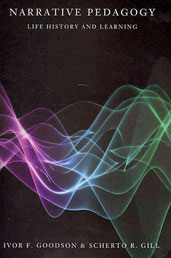Narrative Pedagogy
Learning and Narrative Pedagogy
Pedagogy is a moral activity (Carr, 2000). This is because whatever choices are made, there are moral implications. The teacher’s choices of acting in a particular way in her teaching, for example, deciding to share personal narratives, to enter a reciprocal relationship with the learner, to show respect and love to the learners in her group; these are based on moral decisions. There are also moral elements behind other day-to-day decisions and choices people make. To a great extent, the pedagogical focus in facilitating narrative learning is to provide a safe space for both the teacher and the learner to examine the ethical decisions that confront the individual in their everyday personal and social life, and to examine what kind of person or human being one would like to become.
Narrative pedagogy ultimately respects human dignity and, as Parker Palmer points out, aims to help individuals to ‘discern what is integral’ to their personhood and make choices about what constitutes their integrity so that each becomes whole.
4. Facilitating the narrative learning process
In Chapter Five, we described the dialogic and collaborative process for developing personal narrative. The process contains a spiral of construction and re-construction in a cycle of narration, collaboration, location which also consists of theorisation and integration (see Figure 2 below). The sequences form a spiral which is a continual and ongoing intense process. In our early discussions, this process was perceived from the perspective of life history research. Having explored pedagogy and the role of the teacher, we now explain how this narrative process can be facilitated by an educator, a teacher.
As shown in Figure 2, the starting point is creating a space for narration. Our experience is that it is always helpful to provide an opportunity for the learner to reflect on his/her life stories before the narration. In this way, narration has a pre-active phase and an interactive phase. A timeline is a useful aid for the pre-active phase or preparation, as are drawings, artefacts, and metaphors. We have to trust people’s creative capacities to use what appeals to them. Over time, we have seen many fantastic ideas, such as writing one’s life as a personal myth, drawings one’s life as a journey or a river, colour-coded timelines, and the use of objects and memorabilia.
